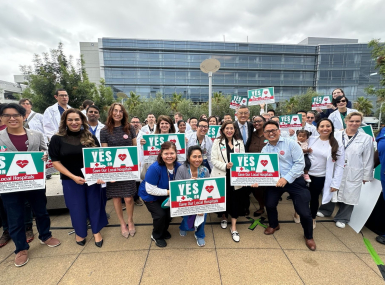HHS announces renewal of COVID-19 emergency declaration
Author

Blaire Bryant
Upcoming Events
Related News

Key Takeaways
On October 2, the Department of Health and Human Services Secretary Alex Azar announced that the agency would be renewing the COVID-19 national public health emergency declaration. The renewed declaration would be effective starting October 23 last for approximately 90 days.
The national declaration unlocks key flexibilities at the federal and local level that aid counties in their ongoing efforts to respond to the virus. Examples of these flexibilities include:
- Makes federal grant funding and supplemental appropriations available to local entities to assist with local support for the prevention and treatment of COVID-19. To date, HHS has distributed $25 billion in emergency grant funding for COVID-19.
- Allows access to the Public Health and Social Services Emergency Fund, which over the course of the pandemic has been allocated $100 billion in the CARES Act and $75 billion through the Paycheck Protection Program and Health Care Enhancement Act. These funds are distributed to county hospitals and local health care providers to address medical surge capacity issues and make up for loss revenue during the public health crisis.
- Expands telehealth and telemedicine capabilities through temporary rules and waivers authorized by the Centers for Medicare and Medicaid services that allow for the expansion of types of services that can be offered by telehealth. Telehealth has emerged as a vital tool for county health providers during the pandemic, helping to improve health care access amid state and local stay at home orders, and facilitating continued delivery of critical health services to vulnerable residents in facilities such as nursing homes. Prior to the pandemic, the use of telehealth was a key strategy for reaching residents in rural and remote areas, where access to health care services has been limited due to rising hospital closures.
The impending renewal on October 23, is the third extension for the emergency declaration first made on January 27, 2020. The declaration will need to once again be extended in late January following the 90 day period.
Attachments
Related News

CMS issues new guidance on Medicaid Community Engagement Requirements
On December 8, the Centers for Medicare & Medicaid Services (CMS) released a Medicaid and CHIP Services Informational Bulletin (CIB) directing states on how to implement the Medicaid community engagement requirements enacted under Section 71119 of the One Big Beautiful Bill Act legislation (Public Law 119-21), or H.R. 1.

California county sales tax measure backfills federal healthcare cuts
Santa Clara County, Calif. will raise an estimated $330 million each year from a sales tax to backfill lose Medicaid funding.
